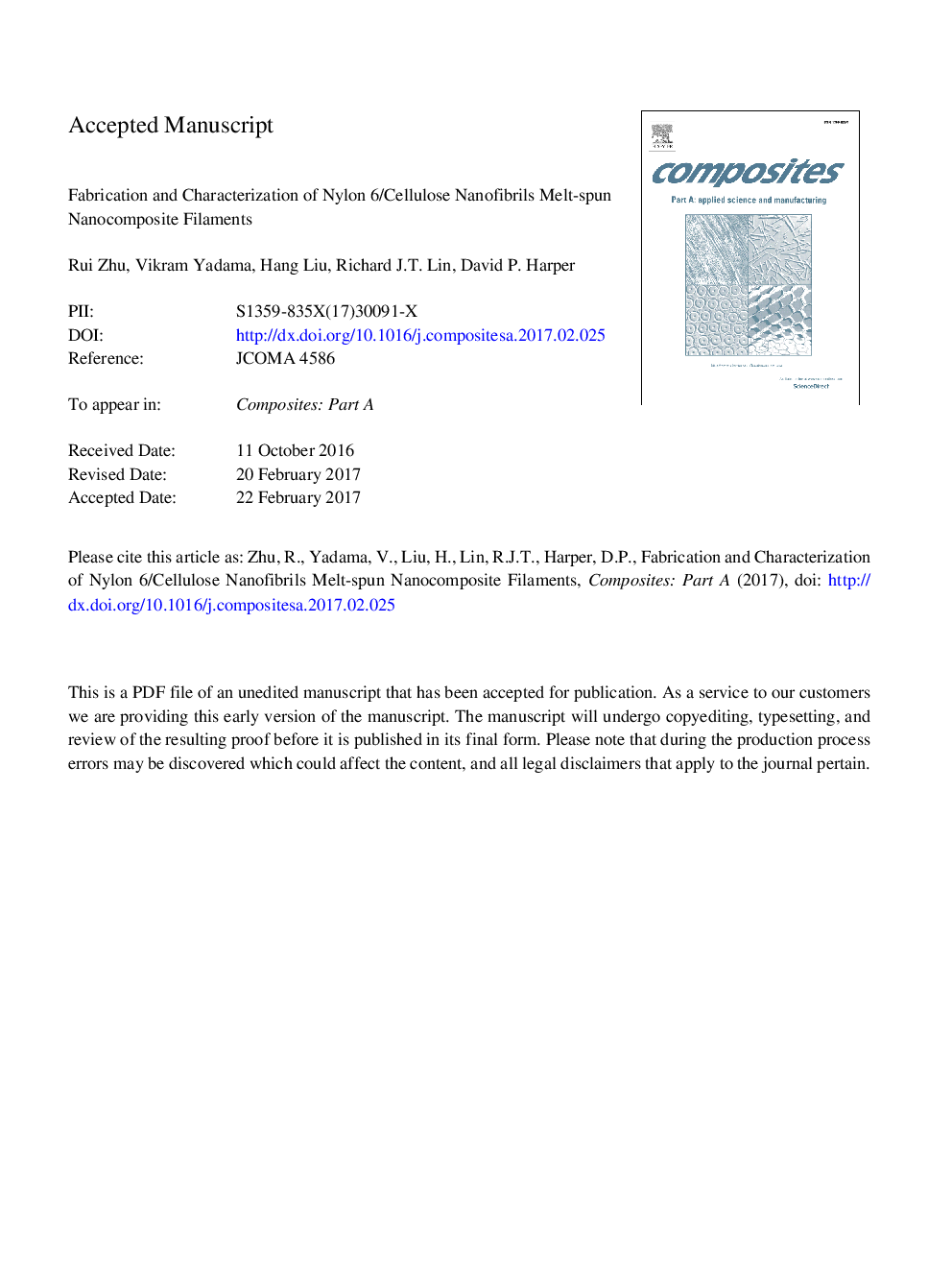| Article ID | Journal | Published Year | Pages | File Type |
|---|---|---|---|---|
| 5439641 | Composites Part A: Applied Science and Manufacturing | 2017 | 32 Pages |
Abstract
Nylon 6/cellulose nanofibrils (CNFs) melt-spun nanocomposite filaments were melt spun using a capillary rheometer to explore their capacity as textile materials with potentially improved fabric comfort. The effects of CNF loading level (0-10Â wt%) on the morphological structures, mechanical and physical properties of the nanocomposite filaments were evaluated. The nanocomposite filaments have much rougher surfaces and non-uniform diameters compared to neat Nylon 6 filaments. Nanoindentation test on the cross-section of the filaments revealed that there was no significant agglomeration of CNFs. As the CNF loading level was increased, the complex viscosity and storage modulus of the nanocomposite filaments were increased, whereas thermal stability was retained. Tenacity and initial modulus of the nanocomposite filaments were improved due to excellent mechanical properties of CNFs. The incorporation of CNFs also increased the hydrophilicity of the nanocomposite filaments, which could have positive implications for textiles as it could potentially improve the perceived comfort.
Related Topics
Physical Sciences and Engineering
Materials Science
Ceramics and Composites
Authors
Rui Zhu, Vikram Yadama, Hang Liu, Richard J.T. Lin, David P. Harper,
